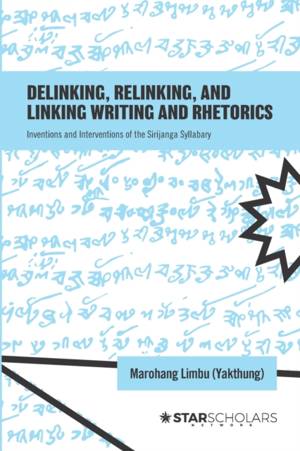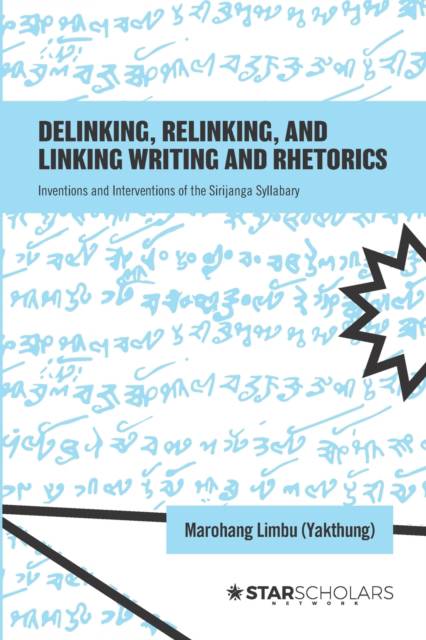
Je cadeautjes zeker op tijd in huis hebben voor de feestdagen? Kom langs in onze winkels en vind het perfecte geschenk!
- Afhalen na 1 uur in een winkel met voorraad
- Gratis thuislevering in België vanaf € 30
- Ruim aanbod met 7 miljoen producten
Je cadeautjes zeker op tijd in huis hebben voor de feestdagen? Kom langs in onze winkels en vind het perfecte geschenk!
- Afhalen na 1 uur in een winkel met voorraad
- Gratis thuislevering in België vanaf € 30
- Ruim aanbod met 7 miljoen producten
Zoeken
Delinking, Relinking, and Linking Writing and Rhetorics
Inventions and Interventions of the Sirijanga Syllabary
Marohang Limbu (Yakthung)
€ 20,45
+ 40 punten
Omschrijving
Marohang Khawahang Limbu's groundbreaking research traces invention, intervention, and reinvention of the Sirijanga writing system, Himalayan Indigenous writing, and rhetorics. Employing his own "delinking, relinking, and linking methodology" and ethnohistorical research methodology, Limbu outlines the ignored and forgotten historical development of Himalayan Yakthung Indigenous writing and rhetorics. In this book, Limbu precisely aims to trace the development of Himalayan Indigenous writing and rhetorics by offering concise methods and/or approaches, such as how to research and digitally document less explored, taught, and even less discussed language/s, writing, performative rhetorics, and oral-performance-based rhetorics. Methodologically, the author demonstrates how to critically and analytically study, analyze, and interpret Indigenous Mundhums, historical artifacts, archeological sites/materials, and Indigenous customary institutional practices and provide solid theoretical, philosophical, and historical frameworks. In this book, Limbu canvasses Himalayan Indigenous Mundhums, writing, and customary rhetorics by making them more structured, methodological, and Indigenous-centered. Additionally, the author not only (re)frames how to institutionalize Himalayan Indigenous writing and rhetorics, but also exhibits how to disseminate them in local, regional, and global contexts in the context of the 21st century's digitally engaged global communities.
Specificaties
Betrokkenen
- Auteur(s):
- Uitgeverij:
Inhoud
- Aantal bladzijden:
- 278
- Taal:
- Engels
- Reeks:
Eigenschappen
- Productcode (EAN):
- 9781736469910
- Verschijningsdatum:
- 1/03/2021
- Uitvoering:
- Paperback
- Formaat:
- Trade paperback (VS)
- Afmetingen:
- 152 mm x 229 mm
- Gewicht:
- 412 g

Alleen bij Standaard Boekhandel
+ 40 punten op je klantenkaart van Standaard Boekhandel
Beoordelingen
We publiceren alleen reviews die voldoen aan de voorwaarden voor reviews. Bekijk onze voorwaarden voor reviews.









